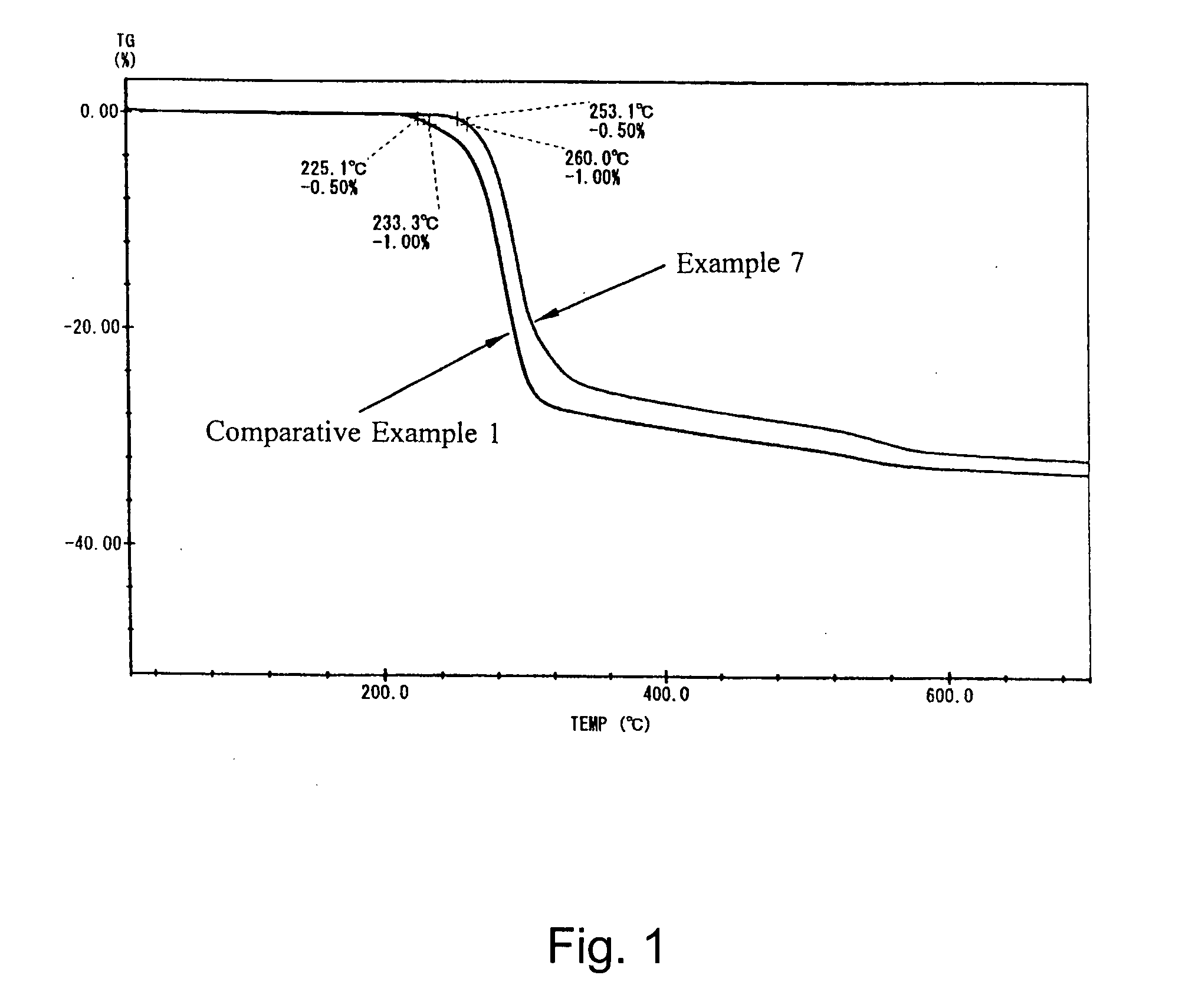Heat-resistant aluminum hydroxide and method for preparation thereof
- Summary
- Abstract
- Description
- Claims
- Application Information
AI Technical Summary
Benefits of technology
Problems solved by technology
Method used
Image
Examples
examples 1 to 19
Preparation of Heat-Resistant Aluminum Hydroxide 1
[0021] A commercially available aluminum hydroxide (manufactured by Sumitomo Chemical Co., Ltd., hereinafter, C-303) was used in Examples 1 to 11; a commercially available aluminum hydroxide (manufactured by Nippon Light Metal Co., Ltd. hereinafter B703), in Examples 12 and 13; a commercially available aluminum hydroxide (manufactured by Nippon Light Metal Co., Ltd. hereinafter, B1403), in Example 14; a commercially available aluminum hydroxide (manufactured by Nippon Light Metal Co., Ltd. hereinafter, BF013), in Example 15; a commercially available aluminum hydroxide (manufactured by Sumitomo Chemical Co., Ltd., hereinafter, C-3005), in Examples 16 and 17; and a commercially available aluminum hydroxide (manufactured by Showa Denko K.K., hereinafter, H-42M), in Examples 18 and 19, respectively in an amount of 400 g. The reaction retarders used were lactic acid (manufactured by Kanto Chemical Co. Inc.), phosphoric acid (manufactured...
examples 1 and 2
example 3 to example 19
The 1% dehydration temperatures (1) and (2) were determined respectively under programmed heating rates of 5° C. / min and 10° C. / min.
[0034] As apparent from the results above, the heat-resistant aluminum hydroxides in Examples are new aluminum hydroxides having a controlled boehmite conversion rate and a markedly heightened dehydration temperature and retaining a sufficient amount of dehydration water even after a severe heat history (high processing temperature and long processing period). There was no significant difference due to difference of the raw aluminum hydroxide used among the test groups, and the 1% dehydration temperatures in Examples were significantly higher than those in Comparative Examples in each test group and the heat-resistant aluminum hydroxides in Examples retained a sufficient amount of dehydration water.
PUM
| Property | Measurement | Unit |
|---|---|---|
| Temperature | aaaaa | aaaaa |
| Fraction | aaaaa | aaaaa |
| Fraction | aaaaa | aaaaa |
Abstract
Description
Claims
Application Information
 Login to View More
Login to View More - R&D
- Intellectual Property
- Life Sciences
- Materials
- Tech Scout
- Unparalleled Data Quality
- Higher Quality Content
- 60% Fewer Hallucinations
Browse by: Latest US Patents, China's latest patents, Technical Efficacy Thesaurus, Application Domain, Technology Topic, Popular Technical Reports.
© 2025 PatSnap. All rights reserved.Legal|Privacy policy|Modern Slavery Act Transparency Statement|Sitemap|About US| Contact US: help@patsnap.com

